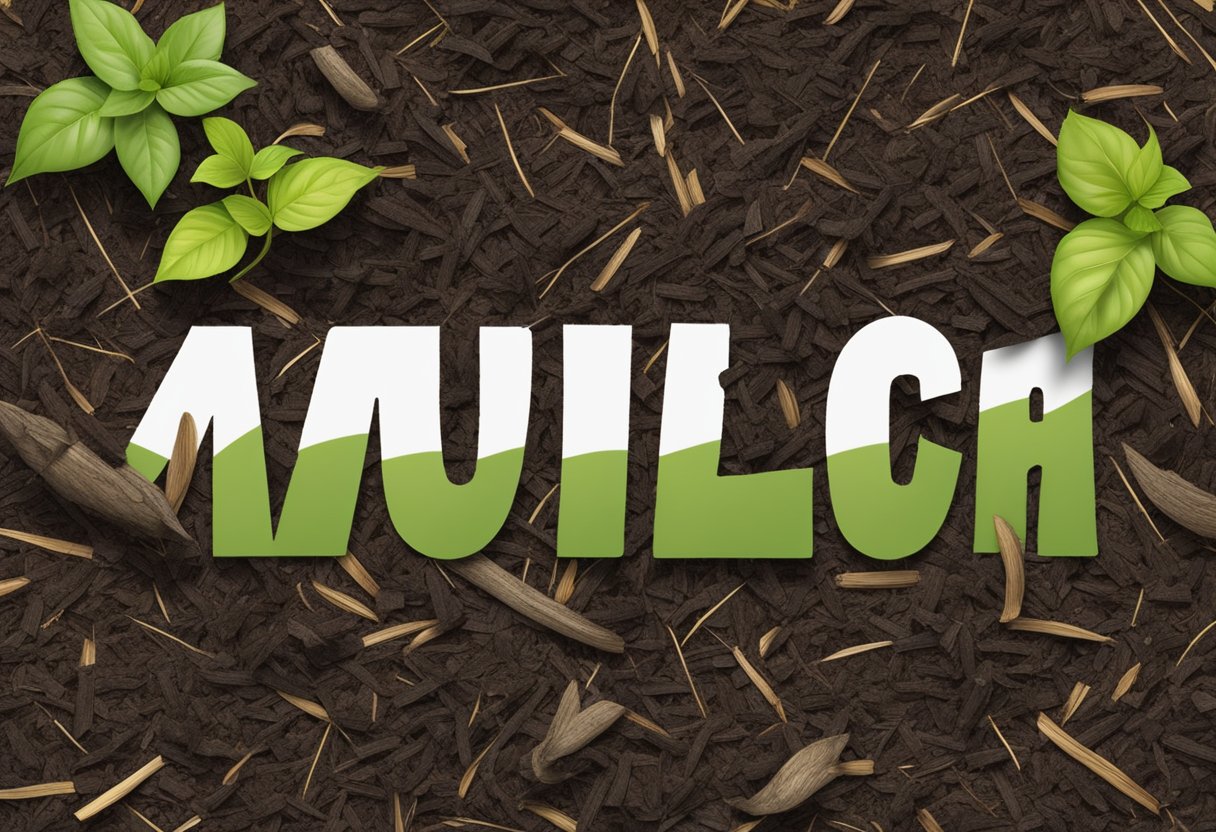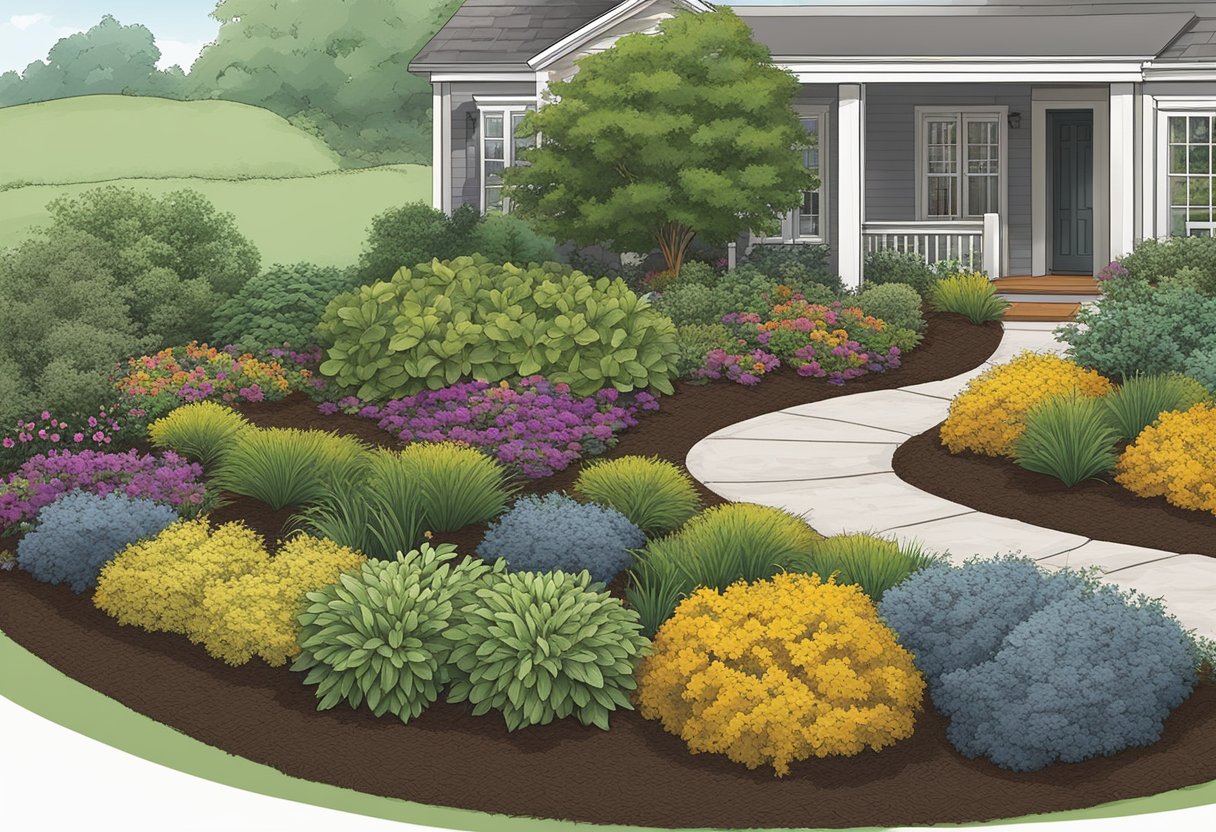Selecting the right mulch for our gardens and landscapes hinges on understanding the specific needs of our soil and plants. Mulch is more than just an aesthetic layer; it’s a functional tool that helps retain soil moisture, suppress weeds, and regulate soil temperature. The diversity in mulch materials means we have options ranging from organic substances like shredded bark and straw to inorganic choices such as stones or rubber. Each type comes with its own set of advantages and drawbacks tailored to different landscaping goals and climate conditions.

We recognize that mulch also contributes to the soil’s health, as organic mulches decompose to enrich the soil with nutrients. When we consider adding mulch to our garden, we’re also looking at factors such as the mulch’s longevity, its impact on soil pH, and the potential for it to carry weed seeds. It’s crucial to match the type of mulch to the various sections of our landscape, as what works for a vegetable garden may not be suitable for ornamental flower beds.
Our approach to mulching must also reflect our commitment to the environment. We opt for sustainable and locally sourced mulch materials where possible, reducing our carbon footprint while fostering a fertile and robust garden ecosystem. We weigh the coverage area, color preferences, and budgetary considerations to arrive at the best mulching strategy, ensuring our landscape not only looks polished but also promotes plant health and soil vitality for seasons to come.
Types and Benefits of Mulch

In our gardens, choosing the right mulch is crucial for healthy plant growth and soil management. Mulching offers protection and enhances soil quality.
Organic Mulch Varieties
Organic mulch is derived from natural materials that decompose over time, enriching the soil with nutrients. Here are some commonly used varieties:
- Wood Chips: Ideal for shrubs and trees, wood chips break down slowly, providing long-term soil cover.
- Straw: A great option for vegetable gardens; it keeps the soil moist and protects against temperature swings.
- Leaves: Chopped leaves are a cost-effective way to suppress weeds and add nutrients as they decompose.
- Compost: It brings a wealth of nutrients to the soil and can be used as a mulch layer or worked into the soil.
- Grass Clippings: Rich in nitrogen, they accelerate decomposition when mixed with high-carbon materials like leaves.
Inorganic Mulch Options
Inorganic mulch includes non-degradable options, offering a more permanent solution for weed control and moisture retention:
- Stone/Rock Mulch: Rock or pebbles add a decorative touch and retain heat.
- Landscape Fabric: Polypropylene sheets allow water through while blocking sunlight to prevent weeds.
- Rubber Mulch: Made from recycled rubber, it doesn’t decompose and is often used in playgrounds.
- Plastic Mulch: Especially popular in vegetable farming to control temperature and moisture.
Advantages of Mulching
Mulch provides numerous benefits for our gardens:
- Moisture Retention: It reduces evaporation, keeping soil moist with less frequent watering.
- Weed Control: By blocking light to the soil, it helps prevent weed seed germination.
- Soil Temperature Regulation: Maintains steadier soil temperatures, protecting roots from extreme heat or cold.
- Adding Nutrients: Organic mulches improve soil fertility as they break down.
- Aesthetic Value: Enhances the overall appearance of landscape beds.
Practical Mulching Tips and Considerations

Mulching is an essential gardening practice to enhance soil health, regulate soil temperature, and suppress weed growth. It requires careful consideration of materials and methods to benefit plants and the landscape effectively.
Mulching Techniques for Different Plants
For flowering plants and vegetable gardens, we use organic mulches like straw or grass clippings to keep the soil moist and enrich it as they decompose. When mulching around trees, especially fruit trees and berries, we avoid piling mulch against the trunk to limit the risk of pests and diseases. Instead, we create a ring that covers the root area without touching the tree bark. Flowers in beds benefit from finer mulches like cocoa hulls, which improve aesthetics as well as soil quality.
Seasonal Mulching and Soil Health
The best time for mulching varies with the season to optimize soil health. In spring, we mulch to warm the soil and stimulate growth; a thinner layer allows the soil to heat up while suppressing weed growth. During the hot summer months, a thicker layer helps retain soil moisture and protect roots. In autumn, we apply mulch after the ground freezes to prevent the thaw cycle that can harm perennials. Winter mulching is about protection, laying down a thicker blanket to maintain consistent soil temperature.
Proper Mulching Practices
We adhere to a depth of 2-3 inches of mulch to balance moisture retention and air circulation for the soil. It’s crucial to leave space around plant stems and tree trunks to prevent rot and disease. For weed suppression, landscape fabrics can be a useful barrier beneath the mulch. We prefer natural materials like wood chips, pine needles, or composted manure which contribute to soil fertility by adding nitrogen as they break down. We avoid materials like sawdust or paper in excess, as they can deplete the soil of nitrogen or lead to issues with pests.